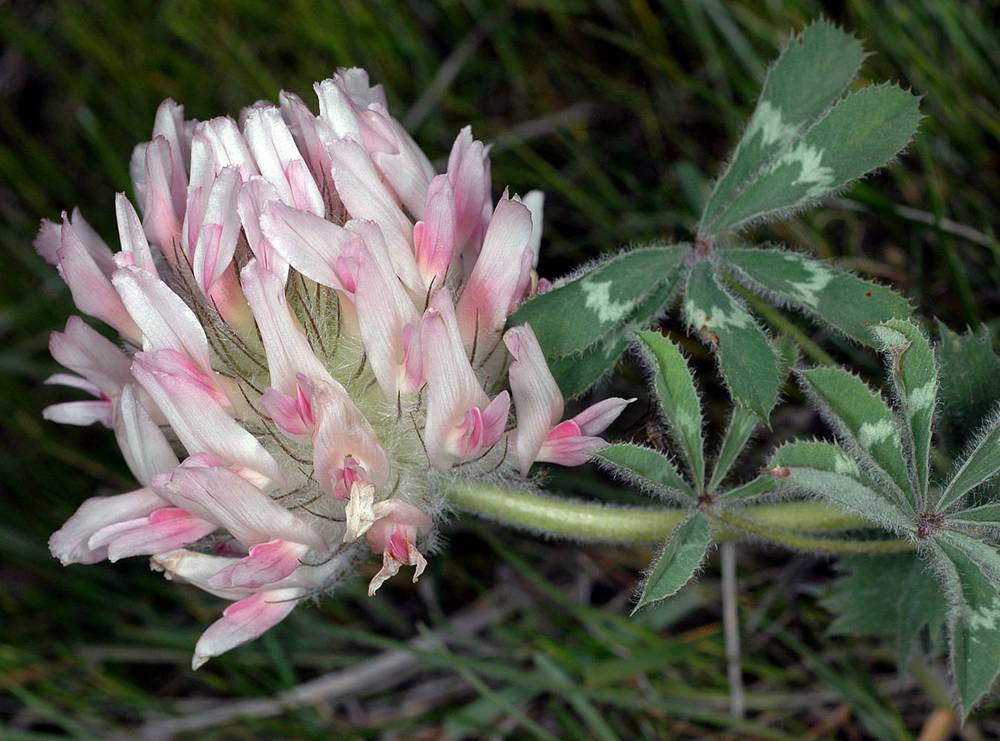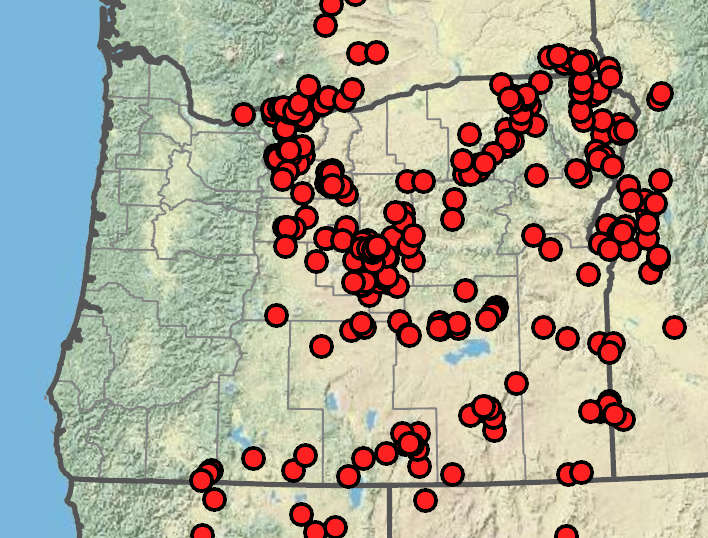Trifolium macrocephalum
Trifolium cernuum
big-headed clover, largehead clover
nodding clover
palmate;
leaflets (5)7–9, broadly to narrowly obovate, often folded, 10–27 × 4–11 mm, bases cuneate;
margins serrulate or irregularly lobed;
veins thickened, especially distally;
tips rounded or truncate, apiculate;
surfaces abaxially villous, adaxially sparsely villous to glabrate;
petioles 10–140 mm;
petiolules 0.9–1.2 mm;
stipules ovate, obovate, or oblong, 10–30 mm;
margins entire.
pinnate;
leaflets 3, obovate or obcordate, 4–15 × 4–10 mm, bases cuneate;
margins coarsely dentate;
veins prominent, recurved;
tips rounded, truncate, or emarginate;
surfaces glabrous;
petioles 10–100 mm;
petiolules ? 1 mm;
stipules triangular-lanceolate, 9–10 mm;
margins entire;
tips long-acuminate, reflexed.
terminal, 20–32-flowered, globose or ovoid-ellipsoidal, 25–80 × 30–70 mm;
involucres absent;
bracteoles broadly ovate, membranous; ? 0.5 mm, truncate.
axillary or terminal, 8–20-flowered, depressed-globose, 9–11 × 8–10 mm;
involucres absent;
bracteoles lanceolate; ~1 mm.
20–80 mm.
6–15 mm, becoming shorter distally.
erect, 1–1.5 mm.
reflexed in fruit, 0.5–2 mm.
20–30 mm;
calyces campanulate, 10–22 mm, villous;
veins 10–15;
tubes 2.5–4 mm;
lobes subulate, subequal, 2–4 × tube length, plumose;
orifices open;
corollas 20–28 mm, white; creamy white, or pinkish;
banners ovate or oblong, 20–28 × 10–13 mm;
tips rounded or slightly emarginate;
keel petals deep pink.
4–5.5 mm;
calyces tubular-campanulate, 4 mm, glabrous;
veins 10;
tubes 2–2.2 mm;
lobes triangular-subulate, markedly recurved in fruit, subequal;
margins green, pink, or purple;
orifices open;
corollas 4–5 mm; < 2 × as long as calyces, pink;
banners obovate, 4–5 × 1–2 mm;
tips deeply emarginate.
longitudinally dehiscent; ovoid, 4–5 mm; ? calyces.
longitudinally dehiscent; ovoid-ellipsoid; ~4 mm; ? calyces.
1–2; mitten-shaped to ellipsoid, 2.5–3 mm, yellow or reddish; smooth.
1–4; ovoid, 0.8–1 mm, yellow, minutely papillate.
=32, 48.
=16.
Trifolium macrocephalum
Trifolium cernuum
Rocky places, hard, compacted clay gumbo, lava beds, sage-covered slopes. Flowering Apr–Jul. 0–2200 m. BR, BW, Col, ECas, Lava, Owy. CA, ID, NV, WA. Native.
Trifolium macrocephalum has the largest inflorescences of any species in the genus. The name T. megacephalum is an illegitimate replacement name for Lupinaster macrocephalum.
Roadsides, lawns. Flowering May–Jun. 50–400 m. Casc, WV. CA; Africa, Asia. Exotic.
Trifolium cernuum, which is native to western Asia and northern Africa, is a relatively recent introduction. Other than a record from wool mill waste in North Carolina in 1932, the earliest records in the United States are from the 1990s in California.
Michael Vincent
Michael Vincent
- Local floras:
CA,
OR,
WA
- Local Web sites:
CalFlora,
CalPhotos,
Flora NW,
PNW Herbaria
WildflowerSearch
iNaturalist (observations)
USDA Plants Database
- LBJ Wildflower Center
- SEINet
- Plants of the World Online
- Encyclopedia of Life
- Wikipedia
- Google Image Search





